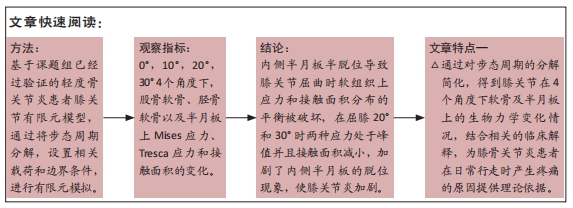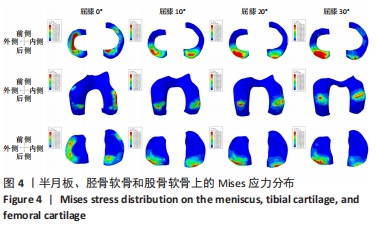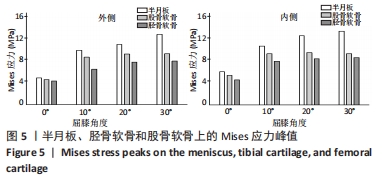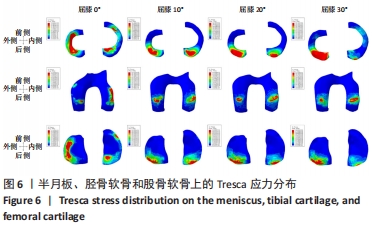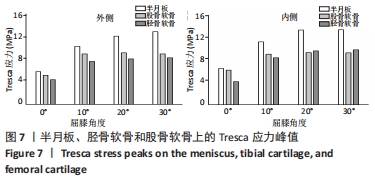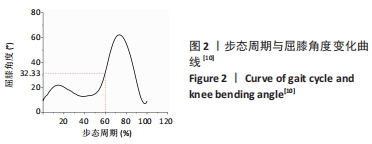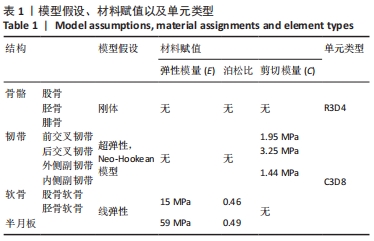[1] ROSETI L, DESANDO G, CAVALLO C, et al. Articular Cartilage Regeneration in Osteoarthritis. Cells. 2019;8(11):1305.
[2] LI L, YANG L, ZHANG K, et al. Three-dimensional finite-element analysis of aggravating medial meniscus tears on knee osteoarthritis. J Orthop Translat. 2019;20:47-55.
[3] CHEN L, ZHENG JJY, LI G, et al. Pathogenesis and clinical management of obesity-related knee osteoarthritis: Impact of mechanical loading. J Orthop Translat. 2020;24:66-75.
[4] SUN J, LIU Y, YAN S, et al. Clinical gait evaluation of patients with knee osteoarthritis. Gait Posture. 2017;58:319-324.
[5] 张震,董跃福,陈秋平,等.基于CT和MRI影像数据融合构建个体化OA膝关节三维解剖模型[J].中国骨与关节损伤杂志,2019,34(12):1241-1244.
[6] 张震,董跃福,苏宏飞,等.轻度OA膝关节有限元解剖模型的构建及其力学分析[J].中国矫形外科杂志,2020,28(5):439-443.
[7] KOHN MD, SASSOON AA, FERNANDO ND. Classifications in Brief: Kellgren-Lawrence Classification of Osteoarthritis. Clin Orthop Relat Res. 2016;474(8):1886-1893.
[8] VAUGHAN CL, DAVIS BL, O’CONNOR JC. Dynamics of Human Gait. Cape Town, South Africa: Kiboho Publishers, 1992:8-12.
[9] FAVRE J, ERHART-HLEDIK JC, ANDRIACCHI TP. Age-related differences in sagittal-plane knee function at heel-strike of walking are increased in osteoarthritic patients. Osteoarthritis Cartilage. 2014;22(3):464-471.
[10] ASTM F3141-17a Standard Guide for Total Knee Replacement Loading Profiles. USA: ASTM International, 2017.
[11] NAGHIBI BEIDOKHTI H, JANSSEN D, et al. A comparison between dynamic implicit and explicit finite element simulations of the native knee joint. Med Eng Phys. 2016;38(10):1123-1130.
[12] DONAHUE TL, HULL ML, RASHID MM, et al. A finite element model of the human knee joint for the study of tibio-femoral contact. J Biomech Eng. 2002;124(3):273-280.
[13] NAGHIBI BEIDOKHTI H, JANSSEN D, VAN DE GROES S, et al. The influence of ligament modelling strategies on the predictive capability of finite element models of the human knee joint. J Biomech. 2017;65:1-11.
[14] SPILKER RL, SUH JK. Formulation and evaluation of a finite element model for the biphasic model of hydrated soft tissues. Computers & Structures. 1990;35(4):425-439.
[15] 冯洋.人体足踝步态模拟机的运动和动力特性研究[D].上海:上海交通大学, 2014.
[16] PEÑA E, CALVO B, MARTÍNEZ MA, et al. Computer simulation of damage on distal femoral articular cartilage after meniscectomies. Comput Biol Med. 2008; 38(1):69-81.
[17] LEROUX MA, SETTON LA. Experimental and biphasic FEM determinations of the material properties and hydraulic permeability of the meniscus in tension. J Biomech Eng. 2002;124(3):315-321.
[18] YANG NH, CANAVAN PK, NAYEB-HASHEMI H, et al. Protocol for constructing subject-specific biomechanical models of knee joint. Comput Methods Biomech Biomed Engin. 2010;13(5):589-603.
[19] HALONEN KS, MONONEN ME, JURVELIN JS, et al. Deformation of articular cartilage during static loading of a knee joint--experimental and finite element analysis. J Biomech. 2014;47(10):2467-2474.
[20] ABIDIN NAZ, RAFIQ ABDUL KADIR M, RAMLEE MH. Three Dimensional Finite Element Modelling and Analysis of Human Knee Joint-Model Verification. Journal of Physics Conference Series. 2019;1372(1):12068.
[21] COOPER RJ, LIU A, DAY GA, et al. Development of robust finite element models of porcine tibiofemoral joints loaded under varied flexion angles and tibial freedoms. J Mech Behav Biomed Mater. 2020;109:103797.
[22] FAVRE J, JOLLES BM. Gait analysis of patients with knee osteoarthritis highlights a pathological mechanical pathway and provides a basis for therapeutic interventions. EFORT Open Rev. 2017;1(10):368-374.
[23] HOSSEINI SM, VELDINK MB, ITO K, et al. Is collagen fiber damage the cause of early softening in articular cartilage? Osteoarthritis Cartilage. 2013;21(1):136-143.
[24] GOLDRING MB. Articular cartilage degradation in osteoarthritis. HSS J. 2012;8(1):7-9.
[25] SANTOS S, EMERY N, NEU CP, et al. Propagation of microcracks in collagen networks of cartilage under mechanical loads. Osteoarthritis Cartilage. 2019; 27(9):1392-1402.
[26] MOYER RF, RATNESWARAN A, BEIER F, et al. Osteoarthritis year in review 2014: mechanics--basic and clinical studies in osteoarthritis. Osteoarthritis Cartilage. 2014;22(12):1989-2002.
[27] MORIMOTO Y, FERRETTI M, EKDAHL M, et al. Tibiofemoral joint contact area and pressure after single- and double-bundle anterior cruciate ligament reconstruction. Arthroscopy. 2009;25(1):62-69.
[28] HAUT DONAHUE TL, HULL ML, RASHID MM, et al. How the stiffness of meniscal attachments and meniscal material properties affect tibio-femoral contact pressure computed using a validated finite element model of the human knee joint. J Biomech. 2003;36(1):19-34.
|
